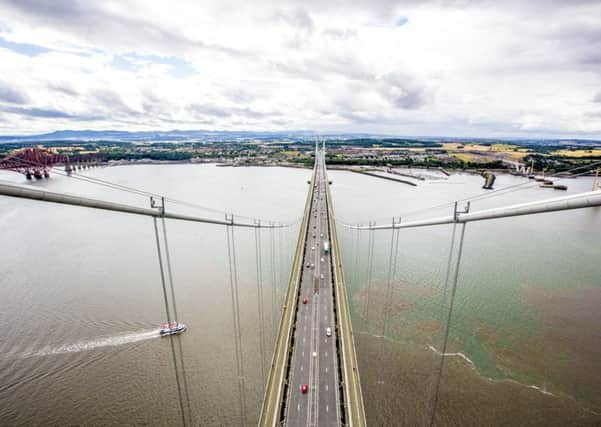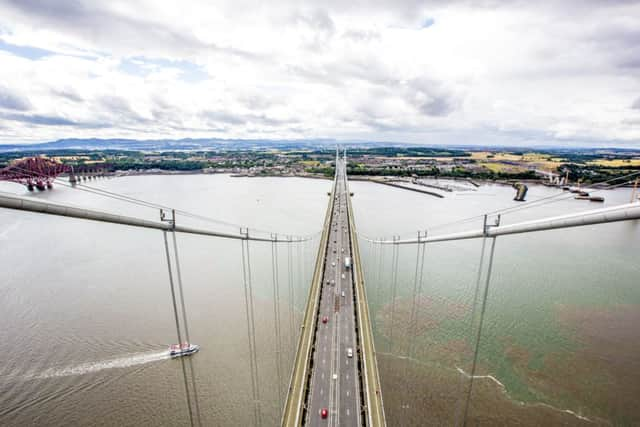Bridge was more than 200 years in the making


The struggle to establish the first permanent crossing between North and South Queensferry began more than two centuries earlier.
For 800 years, pilgrims, travellers and monarchs alike had depended upon the ferries that traversed the treacherous waters of the Firth of Forth.
Advertisement
Hide AdAdvertisement
Hide AdBy 1740, it was decided that no longer should those needing to cross the estuary face a drenching, or sometimes even death, but instead a road crossing should be built.


Over the next 150 years, numerous proposals were put forward for the style and construction, from a tunnel to a chain bridge, but each one was quickly abandoned.
Eventually, in 1890, the Victorians did erect a bridge but with rails rather than a road.
However, its success and the dawn of the motor car gave a new urgency to the issue of a suitable crossing.
Advertisement
Hide AdAdvertisement
Hide AdAfter years of lobbying in the 1920s and 1930s, the Forth Road Bridge Order of 1947 gave the official go-ahead for the bridge we know today to be built.
However, because of the post-war economic situation, the Forth Road Bridge Joint Board was unable to progress with its plans until 1957.
The following year, two firms of civil and structural engineers were chosen to design and oversee its construction – Freeman Fox & Partners and Messrs Mott, Hay & Anderson.
Once completed the crossing would be the fourth longest suspension bridge in the world after the Golden Gate, the George Washington and the Mackinac Bridges.
Advertisement
Hide AdAdvertisement
Hide AdIt was built by the ACD Bridge Company but, as it was the most northerly long span suspension bridge ever to be erected, it was not straightforward and workers struggled to contend with severe storms and winters.
More than 39,000 tonnes of steel was used to construct the bridge and the total cost, including approach and ancillary roads, totalled almost £19.5 million.
The bridge’s towers rose 156 metres above sea level and the deck was supported by two main cables, which stretched from shore to shore, with 768 steel hangar ropes attached to them.
Originally, no more than 11 million vehicles were expected to use the bridge annually but today’s traffic volume has surpassed 24 million – and is still rising.
Advertisement
Hide AdAdvertisement
Hide AdWithin two years, the new Queensferry Crossing, currently being built to the west of the road bridge, will open.
The Forth Road Bridge will then become a dedicated public transport corridor, devoted to buses, taxis, cyclists and pedestrians, with the potential to be converted for light rapid transport.